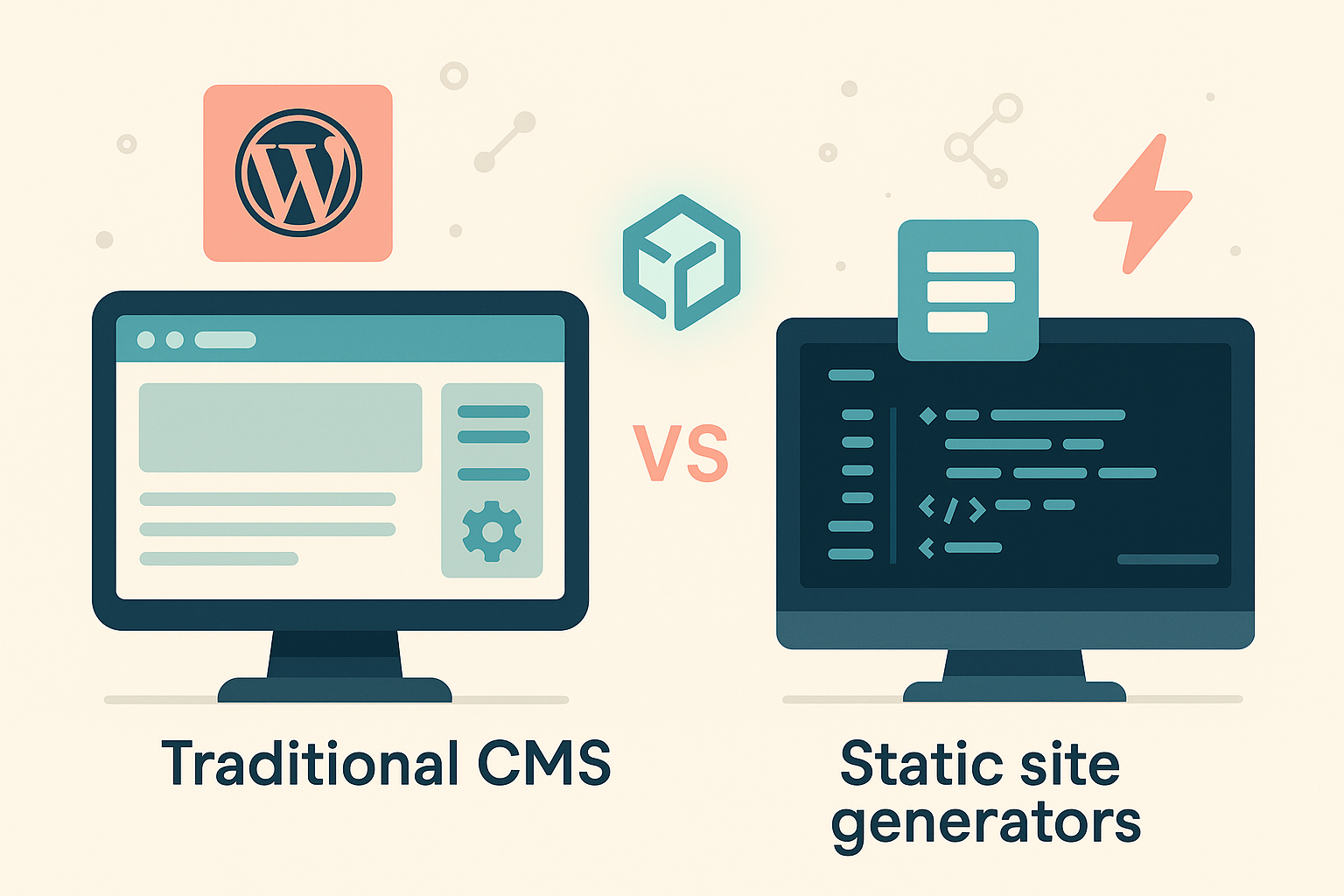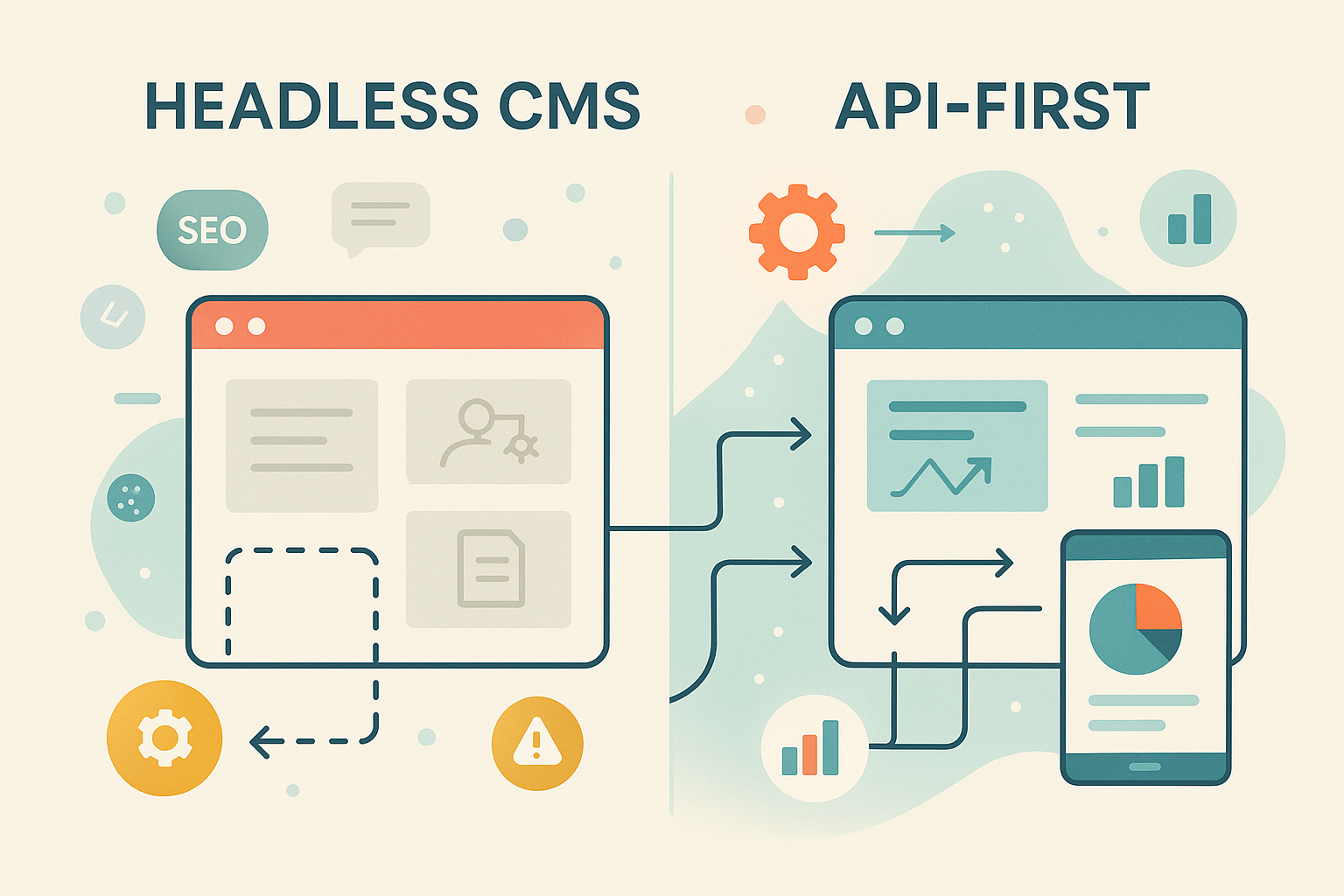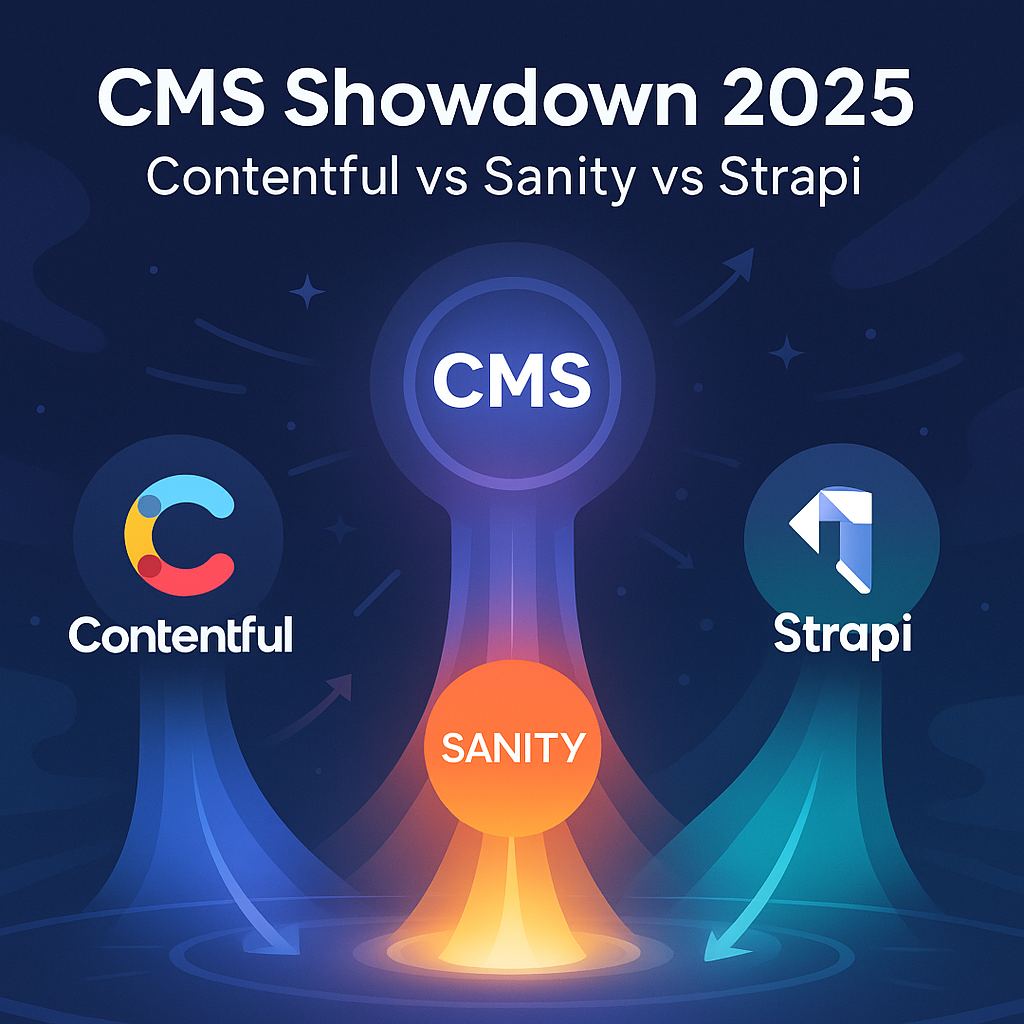Remember when building a website felt like putting together a puzzle where all the pieces were glued together? You know, the kind where if you wanted to change one tiny thing, you risked breaking the whole picture? Well, those days are fading fast. The internet, bless its ever-changing heart, keeps evolving, and so do the ways we build for it. We need websites that can grow, change, and show up everywhere our customers are, not just on a desktop screen.
That's where Headless CMS and API-First Development come in. These aren't just fancy tech terms; they're truly changing how we think about websites. By 2025, they won't just be nice-to-haves; they'll be essential for any business serious about its online presence. This article will show you why these approaches are such a big deal, how they work, and why they're the smart way to build a website that can handle whatever the future throws at it.
Understanding the Shift: From One Big Block to Building Blocks
For a long time, building a website meant picking a traditional Content Management System (CMS) like WordPress. These systems are great, don't get me wrong. They bundle everything together: the part where you write and manage your content (the backend) and the part that visitors actually see (the frontend). It's like buying a car where the engine, seats, and paint job are all one piece. Convenient, sure, but what if you want to swap out the engine for something faster, or change the seats without repainting the whole car? It gets tricky, fast.
This all-in-one approach, often called a 'monolithic' architecture, has its limits. As the digital world got more complex, with content needing to appear on phones, smartwatches, and even smart refrigerators, these traditional systems started to feel a
bit clunky. They weren't built for that kind of widespread content delivery. So, smart folks in web development started thinking, "What if we could separate the content from how it looks?" And that, my friends, is the big idea behind decoupling and modularity. It's about breaking down that big, single block into smaller, independent building blocks that can work together, but also stand alone.
Headless CMS: Your Content, Anywhere You Want It
So, what exactly is a Headless CMS? Think of it as a super-smart content database. It's the brain of your website, but without the body. It handles all the heavy lifting of creating, managing, and storing your content, but it doesn't care one bit about how that content actually looks on a screen. That's the 'headless' part: no built-in frontend, no pre-set design.
Here's how it works:
Content as Pure Data: Your articles, images, product descriptions, and videos are stored as raw, structured data. This means they're incredibly flexible. They aren't tied to a specific webpage layout; they're just information, ready to be used.
Frontend Freedom: Because the Headless CMS doesn't dictate the look, you can use any frontend technology you like. React, Vue, Angular, Next.js, or even something completely new that comes out next year. You can even use different frontends for different channels. Maybe your website uses React, but your mobile app uses something else. No problem!
Content Delivered by Request: When a website or app needs content, it simply asks the Headless CMS for it. The CMS then sends the requested data through something called an API (Application Programming Interface). It's like ordering food from a menu; you ask for what you want, and the kitchen (CMS) sends it to your table (frontend). This separation means your content can go anywhere, not just to your main website. It can power your app, your smart display, or even a voice assistant. It's all about making your content truly versatile.
API-First Development: The Connective Tissue of Modern Websites
If a Headless CMS is the brain, then API-First Development is the nervous system. It’s a way of building software where the Application Programming Interfaces (APIs) are designed and built first, before anything else. Think of APIs as the universal translators that allow different pieces of software to talk to each other. In an API-First world, these conversations are the priority.
Here’s what that really means:
APIs as the Blueprint: Before you even think about how something looks or feels, you design the API. This API acts as a clear contract, defining exactly how different parts of your system (and even external systems) will interact. It’s like drawing up detailed architectural plans before you start building a house.
A Developer's Dream: This approach makes life much easier for developers. They get robust, well-documented APIs that are simple to use. This means less guesswork, fewer headaches, and more time spent building cool features rather than figuring out how things connect.
Seamless Teamwork: Because everyone works from the same API blueprint, different teams can build different parts of a project at the same time. The frontend team can build the user interface while the backend team builds the data logic, and they know everything will fit together perfectly in the end. This makes projects move faster and smoother.
Interoperability is Key: APIs are all about making things work together. With an API-First approach, your website can easily connect with other services, like payment gateways, CRM systems, or marketing automation tools. It’s like having a set of universal plugs and sockets, so all your digital tools can easily share information and work as a result, work better together.
Why 2025 is the Tipping Point: The Big Reasons Everyone's Jumping On Board
So, why is all this becoming so important right now, especially as we look towards 2025? Honestly, it boils down to a few big shifts in how people use the internet and
what businesses need to do to keep up. It's not just about being cool; it's about staying relevant and effective.
The Omnichannel Experience is a Must-Have: Think about it. Your customers aren't just on your website anymore. They're on their phones, their tablets, maybe even their smart TVs or voice assistants. They expect a smooth, consistent experience no matter where they find you. Headless CMS and API-First make this possible because your content is ready to be delivered to any channel, not just one. It's like having a master key that opens every digital door.
Speed and Smoothness Rule the Roost: Nobody likes a slow website. Seriously, a few extra seconds of loading time can send potential customers running. Decoupled architectures, by separating the frontend from the backend, often lead to much faster loading times and a generally smoother user experience. When your website feels snappy and responsive, people stick around longer and are more likely to do what you want them to do.
Websites That Can Grow and Change: The digital world changes constantly. What's popular today might be old news tomorrow. With these modern approaches, you can update or even completely swap out your frontend without touching your content backend. This means your website can easily grow, change, and adapt to new technologies or business needs without needing a complete overhaul every few years. It's like building with LEGOs; you can always add new pieces or rearrange old ones.
Happy Developers, Better Websites: Let's be real, developers love working with tools they enjoy. Headless and API-First give them the freedom to pick the best tools for the job, rather than being stuck with whatever a traditional CMS forces on them. Happy developers tend to build better, more innovative websites, and that's a win for everyone.
A Little Extra Security, Just Because: By separating your content management system from your public-facing website, you can actually make things a bit safer. If one part gets attacked, the other is often unaffected. It's like having two separate doors to your house instead of just one big one. For more information on keeping your website safe, you might want to check out our web development services.
Tangible Business Benefits: What This Means for Your Bottom Line
Alright, so we've talked a lot about the techy stuff. But what does all this really mean for your business? How do Headless CMS and API-First development actually help you make more money, save time, or just generally run things better? Well, here's the good news: the benefits go way beyond just making developers happy.
Get New Stuff Out Faster: Imagine you have a brilliant idea for a new marketing campaign or a cool feature for your website. With these modern approaches, you can build and launch those things much quicker. Because your content is separate and your systems talk easily through APIs, you spend less time wrestling with technology and more time getting your ideas in front of your customers. This means faster time-to-market for new digital products and campaigns, which can be a huge competitive edge.
Save Money in the Long Run: While there might be a bit more effort upfront, these systems often save you cash over time. You can reuse content across many different platforms without having to re-enter it. Plus, because everything is more modular, you can update smaller parts of your system without having to rebuild the whole thing. This means less wasted effort and reduced technical debt, which is just a fancy way of saying you won't have to pay a fortune later to fix old, clunky code.
Happier Customers, More Sales: When your website is fast, responsive, and works perfectly on any device, your customers notice. A better user experience means people stay longer, find what they're looking for, and are more likely to convert into paying customers. It's simple: improved customer engagement and conversion rates are a direct result of a smoother digital experience.
Ready for Tomorrow, Today: The internet is always changing, and new devices and platforms pop up all the time. By building your website with a Headless CMS and API-First approach, you're essentially future-proofing your digital investment. You won't be scrambling to rebuild your entire site every time a new trend emerges. Instead, you'll be able to easily plug into new technologies, making sure your digital presence is always ready for what's next. It's like building a house with walls that can easily be moved around, instead of solid concrete. You can adapt as your needs change.
Navigating the Landscape: A Few Bumps in the Road (But Totally Worth It)
Now, while Headless CMS and API-First development sound pretty amazing (and they are!), it wouldn't be fair to say it's all sunshine and rainbows. Like any powerful tool, there are a few things to keep in mind, especially when you're just starting out. It's not about being scared, but about being prepared.
The Learning Curve Can Be a Bit Steep: If your team is used to traditional CMS platforms, there will be a new way of doing things. The initial setup can feel a bit more complex because you're essentially building two separate systems (content and presentation) that need to talk to each other. It's like learning to drive a stick shift after only knowing automatics. It takes a little more thought at first, but once you get it, you have so much more control.
You'll Need Good Frontend Talent: Because the Headless CMS doesn't handle the visual part, you'll need skilled frontend developers who can build that engaging user interface. If you don't have that expertise in-house, you might need to find a good partner or hire new talent. It's an investment, but a worthwhile one for a truly custom experience.
Content Preview Can Be Tricky (But Getting Better): In a traditional CMS, you see exactly what your page looks like as you're writing it. With a Headless CMS, since the content is separate from the display, getting a real-time preview used to be a bit of a headache. The good news is that modern Headless CMS platforms are constantly improving this, offering better preview environments that bridge the gap.
More Moving Parts Mean More Coordination: When you have separate systems, you naturally have more pieces to manage. This can sometimes mean a bit more complexity in project management and making sure all your tools play nicely together. But with good planning and clear communication, this is totally manageable.
These aren't roadblocks, just things to be aware of. With a clear strategy and the right team, these considerations are easily handled, and the long-term benefits far outweigh the initial effort. It's all about making informed choices for your digital future.
Future-Proofing Your Digital Presence
So, there you have it. Headless CMS and API-First development aren't just buzzwords; they're the smart way to build websites for today and tomorrow. They offer a level of flexibility and power that traditional systems just can't match. By separating your content from its presentation, and by making sure all your digital tools can talk to each other easily, you're setting your business up for some serious wins.
Think about it: faster new features, less money spent on constant rebuilds, happier customers because your site is a joy to use, and a digital presence that can easily grow with whatever new tech comes next. It's about building a website that's not just good for now, but great for the long haul.
If you're looking to make your website truly ready for 2025 and beyond, these approaches are definitely worth a closer look. They're not just changing the game; they're helping you win it.


